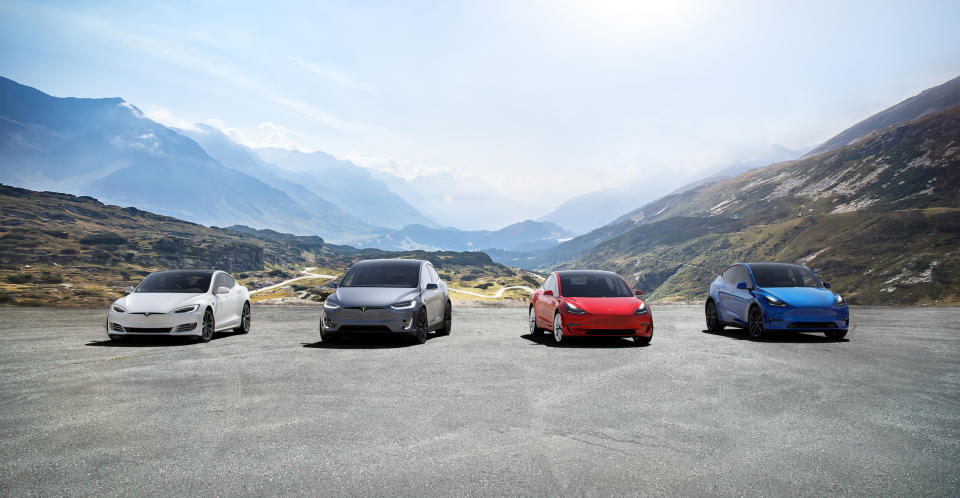3 Key Takeaways From Tesla's First-Ever "Impact Report"
On Monday, electric-car company Tesla (NASDAQ: TSLA) published its first-ever "Impact Report."The new report "measures the impact our products and operations have on the environment and our communities," Tesla said. More specifically, the report provides investors with an overview of how the company's products, operations, supply chain, and organizational culture are making progress when it comes to sustainability -- from both an environmental and a stakeholder perspective.
Here's a look at some key takeaways from the report.

Image source: Tesla.
Tesla's mission
The report offers a clear reminder of Tesla's mission, which is simply to "accelerate the world's transition to sustainable energy."
In other words, Tesla believes rising global CO2 emissions are unsustainable, making a revolution necessary in both the generation and the consumption of energy. But Tesla believes there is a way it can help.
And the world cannot address its energy habits without directly reducing emissions in the transportation and power sectors. This issue is Tesla's entire reason for existing. We are focused on creating a complete power and transportation ecosystem from solar generation and energy storage to all-electric vehicles.
Environmental impact
While Tesla's global environmental impact is still small relative to the 35 gigatons of annual CO2 emissions produced annually, the company is on a path to make a meaningful impact. Tesla estimates its fully electric fleet has averted more than 4 million metric tons of CO2 emissions over the 10 billion miles its 550,000 vehicles have driven.
Meanwhile, the company has installed over 3.5 gigawatts of solar installations and generated more than 13 terawatt-hours of emissions-free electricity. "To put 13 TWhs in perspective, this amount of energy could supply the annual residential electricity consumption for the entire state of Connecticut," Tesla said.
The company is also aiding a transition to sustainable energy by providing battery-based energy storage solutions. Its 129 megawatt-hour powerpack system, combined with a wind farm near Jamestown, South Australia, is an example of a grid-scale energy storage project providing a zero-emissions solution.
Vehicle safety
Tesla also boasts about its vehicles' safety, which is demonstrated both by their five-star safety ratings and by lower crash occurrences when Tesla's driver-assist Autopilot system is activated.
In Q1 2019, we registered one accident for every 2.87M miles driven in which drivers had Autopilot engaged. For those driving without Autopilot, we registered one accident for every 1.76M miles driven. By comparison, NHTSA's most recent data shows that in the United States there is an automobile crash every 436K miles.
Other factors discussed in the report include Tesla's efforts to reduce the carbon footprint of its operations, including manufacturing, retail, distribution, sales, Supercharger network, and more; recycling initiatives; the company's commitment to use only responsibly produced materials; and diversity and inclusion.
While an update like this may not be material to any investing thesis in the near term, Tesla's qualitative and quantitative efforts to track its impact on the environment and on stakeholders can help the company stay focused on its mission while helping investors better understand its goals and progress.
More From The Motley Fool
Daniel Sparks owns shares of Tesla. The Motley Fool owns shares of and recommends Tesla. The Motley Fool has a disclosure policy.

